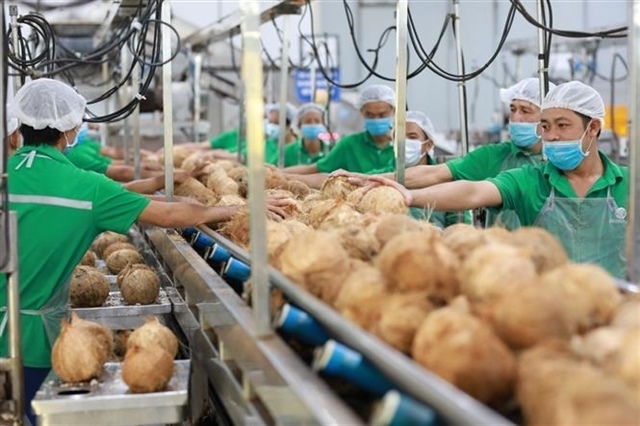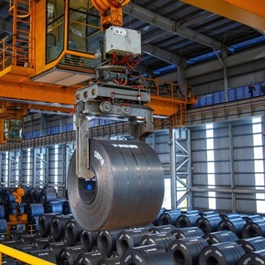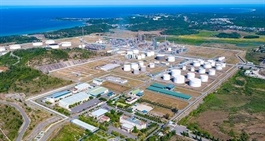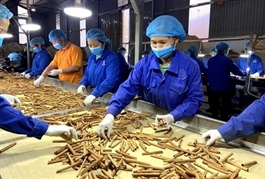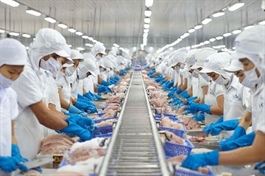E&P activities in oil and gas industry heating up
E&P activities in oil and gas industry heating up
A decade after the peak, the oil and gas industry is seeing a new investment boom with exploration and production (E&P) activities heating up globally again.
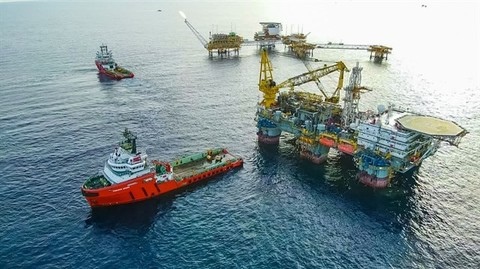
Offshore jack-up rigs of PV Drilling. — Photo pvdrilling.com |
The upstream oil and gas sector is witnessing a resurgence of investment activity over the past few years, according to data from the US Energy Information Administration (EIA).
After hitting a floor in 2020, upstream investments increased by 11 per cent in 2022 and grew another 7 per cent in 2023. The upward trend in upstream oil and gas investment is expected to continue into 2024.
The renewed investment surge is particularly prevailing in North America, where favourable market conditions and technological advancements are driving a significant inflow of capital.
Similarly, countries in the Middle East and Asia are also ramping up their E&P investments to meet growing domestic energy demands as well as export commitments.
In South East Asia, the upstream oil and gas sectors in Malaysia and Indonesia are poised for further investment and expansion.
In Malaysia, the national oil company Petronas is ramping up its upstream spending, with a focus on growing E&P activities to boost domestic oil and gas output.
Earlier this year, Malaysia's regulatory agency awarded seven new production sharing contracts covering six exploration blocks and one resource exploration opportunity. Petronas estimates these deals will generate over 1.3 billion Malaysian ringgit (US$277 million) in investment for exploration work.
The Malaysian government is actively supporting increased offshore exploration, setting the stage for the upstream sector's continued growth in 2024 and beyond.
Indonesia has also outlined ambitious investment plans for its oil and gas industry. The country intends to invest $17 billion in the sector in 2024, a 29 per cent increase compared to 2023 level. This capital inflow is aimed at boosting Indonesia's oil and gas production capabilities, with the plan to drill around 930 wells in 2024, up from 790 wells the previous year.
In Việt Nam, E&P projects have been lacking since 2014 due to the plunging and prolonged low prices of crude oil, making new oil and gas development projects economically unviable.
However, with the recovery of crude oil prices, the Vietnam Oil and Gas Group (PetroVietnam) is planning to invest around VNĐ49.2 trillion ($1.9 billion) in 2024, up nearly 57 per cent from last year. Over VNĐ25.7 trillion will be invested in the upstream sector.
PetroVietnam Exploration Production Corporation (PVEP), a subsidiary of PetroVietnam, is leading the investment plan for 2024, with over VNĐ20.6 trillion. PVEP will dedicate resources to develop activities at various key oil and gas projects.
This renewed upstream investment by PetroVietnam and its subsidiaries signals Việt Nam's efforts to ramp up oil and gas production capabilities amid the recovery in global energy prices, aiming to boost the country's domestic energy supplies.
PetroVietnam Technical Services Corporation (PTSC) plans to invest over VNĐ1.8 trillion in 2024, 4.4 times more than 2023. During the first quarter of the year, it invested VNĐ301 billion.
Meanwhile, PV Drilling expects stable high oil prices will increase domestic and regional drilling and well activities, boosting demand for rigs and services. It plans more than VNĐ2.6 trillion investment in 2024, versus less than VNĐ50 billion in 2023.
The company plans to shift from buying new $130 million rigs to acquiring used rigs for $90 million, and spend $19.8 million on equipment.
Supply glut risks improbable
In 2014, $100 per barrel oil prices drove a record $700 billion global E&P investment by majors like ExxonMobil, Chevron, BP, especially in North America, Brazil, West Africa and the North Sea.
The Middle East also expanded production capacity to maintain market share.
But by late 2014, oversupply caused prices to crash below $50 per barrel, leading to project cancellations and suspensions.
A decade later, the industry faces a new investment race, as EIA forecasts 2024 oil demand growth rate will outpace that of supply.
Việt Nam's major domestic oil and gas fields, exploited since the 1980s-2015, are now being exhausted, however growing industrial and energy demand requires accelerating exploration and production.
Key upcoming projects like Lạc Đà Vàng Cửu Long, Sư Tử Trắng Pha 2B, Nam Du - U Minh, and especially Block B - Ô Môn will provide substantial, stable work for upstream companies.
This dynamic E&P activity is expected to generate ample business for PTSC in the coming years, as the company has won over $1.4 billion in Block B project contracts and potential future packages.
PV Drilling's entire fleet of jack-up rigs are committed to long-term overseas contracts. However, domestic drilling demand in Việt Nam is forecast to rise sharply from 2025, driven by major new oil and gas projects.
In Malaysia, PV Drilling maintains a 25 per cent market share in the jack-up rig segment, making it the second largest provider. The company currently operates one rig in Indonesia, but a recent long-term contract win means it could deploy up to two rigs there starting in 2025.





